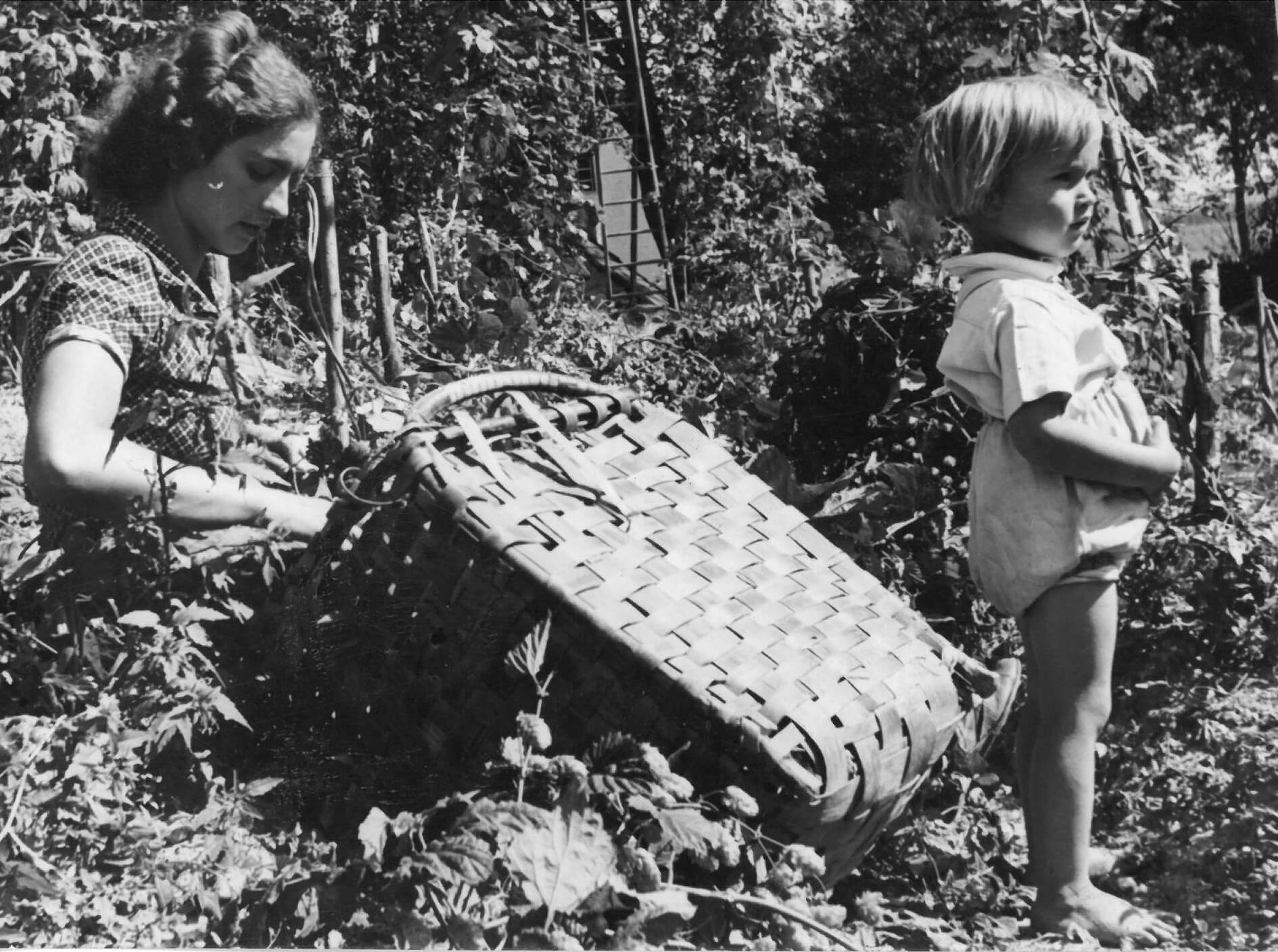The plant
Hops ( Humulus Lupulus L.)is a dioecious climbing plant belonging to the hemp family. The plant grows up to 8 meters and is almost exculsively cultivated between the 35. and 55. latitude in more than 50 countries.
The changeover to trellises
In Germany, hop has been cultivated as a so called “pole trellis” for more than 1000 years. This means, that a up to 9 meters high spruce pole was anchored next to every rootstock and had to be renewed every year. Further disadvantages were the bad ventilation of the plant and the infestation of the wood by pests.
Together with the expansion of the hop growing industry in the Hallertau and in the other growing areas like Splat, Tettnang, England or Alsace, it came to a changeover to “trellis” at the end of the 19. century. In China, for example, low trellis systems (1.80 to 2.50 meters) were successfully implemented.
Nowerdays, the widespread poles made of pine or spruce with a high from 9 to 10 meters within the trellises, are more and more replaced by poles made of concrete due to ecological concerns.
Uncovering, Training, Picking
After the plants are uncovered and cutted in spring, two or three shoots per hill are trained clockwise around the previously attached wire. Now the plant got time until St. John (24. June), to reach the height of trellis. If there is enough rain and abundant sunshine, the plant starts to bloom and develops cones after three to four weeks, before the hop is picked at the end of August/September.
Hop Picking – then and now
The annual hop harvest in autumn was also done by hand up to the 1960s. Huge numbers of workers from the cities and poorer regions came to the hop growing areas and stayed for two or three weeks. Depending on time and region, the vines were picked either directly in the hop garden or on the farmyard. The pickers were paid according to the picking amount. Only around 1960, when wages had become too high and workers too scarce, picking machines came into use.
The first hop picking machine was invented by an American in 1878 and, due to a German patent, produced in Nuremberg. Even the Hallertauer Company “Wolf” was one of the first inventors.
Nowerdays, the cutted vines are brought to the hop farm by tractors and put into the hop picking machine, were the cones are picked and washed. After that process, the cones come into so called “killn” for drying. After an appropriate conditioning, the hops is packed and brought to the seal hall.
Development in the USA and England
The USA are the second largest hop nation in the world. While the first settlers cultivated hops especially in the east of the land from the beginning of the 17. century, the plant is now mainly cultivated in Washington, Oregon and Idaho. It is said that in 1628 the first hop plants came from England to the new continent until – with the arrival of German settlers -even German hop varieties came into the country. At the present time, the hops area in the USA is 22,952 hektar.
The exact beginning of hop cultivation in England lies in the dark. According to different sources, Flemish settlers brought the plant to the island between 1511 and 1549. At the beginning, the English people strictly distinguished between “beer”, brewed with hops, and “ale”, brewed without hops. Interestingly, there were reservations against giving hops into the beer, as this herb would ” ruin the taste of the beverage and endanger the people”.
On the other hand, some soureces say that hops was cultivated already in the Middle Ages but that the knowledge about this brewing art has been forgotten until the 16. century.
There is evidence that English hops was exported to Germany already in 1750. Since the middle of the 19. century, Great Britain has become the most important import country for hops, most recently from Germnay. In good years, the English hop industry can meet 2/3 of the domestic needs.





